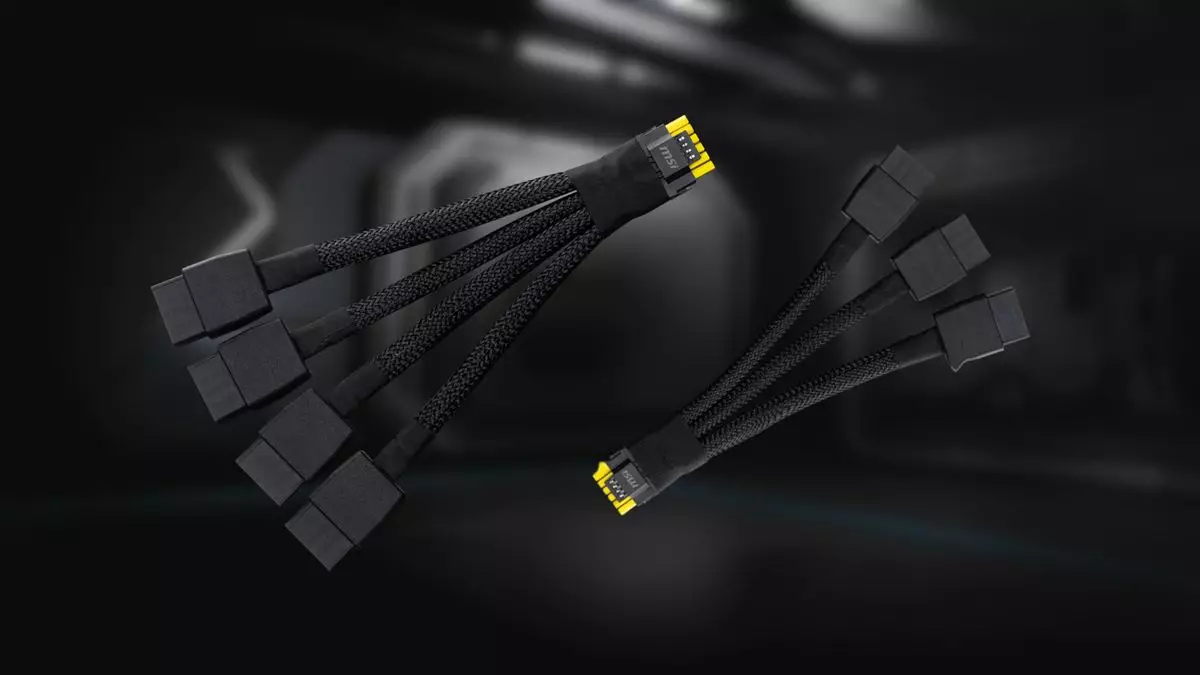The debut of the RTX 4090 graphics card marked a significant milestone in GPU technology, yet it was tarnished by a critical flaw: the notorious melting of its power cables. This issue not only deterred potential buyers due to its sky-high price tag but also raised substantial concerns regarding the reliability of high-performance graphics cards. As users strived for top-tier gaming experiences, some found themselves battling hardware failure, nightmares that stemmed from faulty power connections. The underlying reasons behind these overheating incidents were multi-faceted, including the inadequacy of the 12VHPWR socket design, the mediocre quality of certain adapter cables, and the ambiguous nature of connection satisfaction—was the cable fully seated or not?
As the graphics card market transitioned toward the RTX 50-series, the concerns surrounding power connections became even more pressing. With the upcoming models demanding significantly higher power consumption compared to their predecessors, whispers of “meltgate” filled the air. Users rightly demanded robust solutions to ensure their investment in high-priced GPUs would not melt away into a frustrating experience.
In response to the rising concerns, MSI took decisive action by introducing a redesigned adapter for its Blackwell GPUs. The RTX 5090, RTX 5080, and RTX 5070 Ti models will integrate this new cable, which is engineered to eliminate the uncertainty regarding cable connections. Notably, this refresh appears to build on methods previously established in MSI’s power supply units, showcasing the company’s commitment to reliability and user experience.
Central to MSI’s innovation is the incorporation of an unmistakable bright yellow plastic surrounding the 12V-2×6 pins. This visually striking feature serves as a straightforward indicator of cable connection integrity. If a glimmer of yellow is visible after the cable is inserted, the user can be assured that the connection is inadequate. This design philosophy leans toward the principle of simplicity. Instead of utilizing elaborate warning systems or intricate diagnostics, MSI adheres to an easily understandable signal that encourages proper cable management.
The updated RTX 50-series, particularly the RTX 5090, has been reported to draw an astonishing 575 watts of total graphics power. With sizable energy demands like this, ensuring stable and safe power connectivity becomes critically important. The inherent risk of drawing nearly 50 Amperes of current through a compact connector raises valid questions about the long-term viability of such systems if protection measures are neglected.
Interestingly, it appears that not all the new series will enjoy the benefits of MSI’s yellow warning system. The RTX 5070, for instance, is excluded from this enhancement, deemed low risk due to its comparatively moderate power consumption of 250 watts. However, the choices associated with this exclusion may make one wonder if the threshold of power consumption is truly ideal for predicting potential issues.
While MSI’s yellow-tipped cables promote simplicity, a few of its competitors have opted for more sophisticated approaches to mitigate similar risks. Some manufacturers have introduced warning lights or sophisticated systems that aim to catch improper connections before they lead to hardware failure. Despite their advanced nature, this complexity could confuse users, potentially leading to failures in recognizing a safety alert promptly.
Users may be inclined to appreciate the straightforwardness of MSI’s approach as a means of ensuring user safety is prioritized without unnecessary complication. If embraced effectively, this simplicity could redefine standard practices in the industry, encouraging other manufacturers to adopt similar easily understandable systems.
The initiative taken by MSI to address the power cable concerns surrounding high-performance GPUs marks a pivotal moment within the graphics card industry. By focusing on user-friendly design and eliminating the guesswork of powering high-wattage components, MSI sets a new benchmark for both safety and usability.
As we prepare for the next generation of graphics cards with ever-increasing energy demands, the industry must learn from past failures. Innovations like MSI’s yellow plastic connection indicator not only bolster consumer confidence but also pave the way for a more secure and effective gaming experience. The stakes are high, and it’s crucial that both manufacturers and users commit to prioritizing safety as graphics technology continues to advance.

